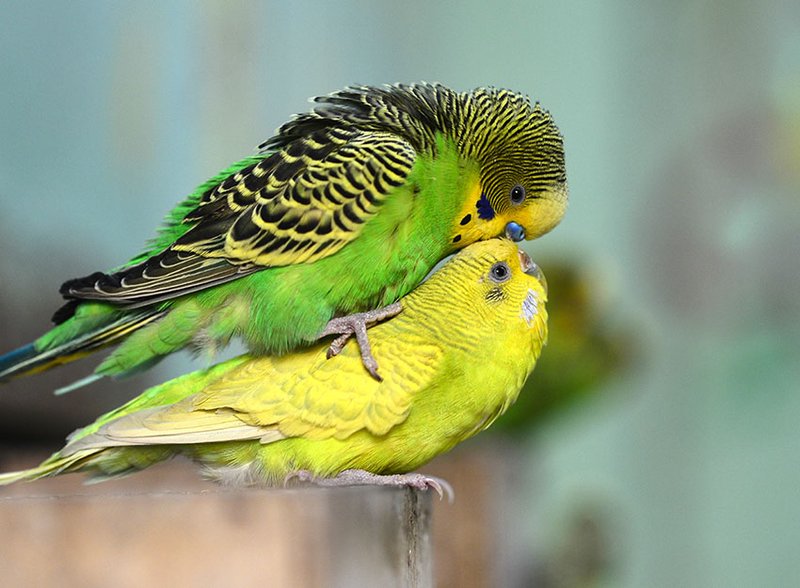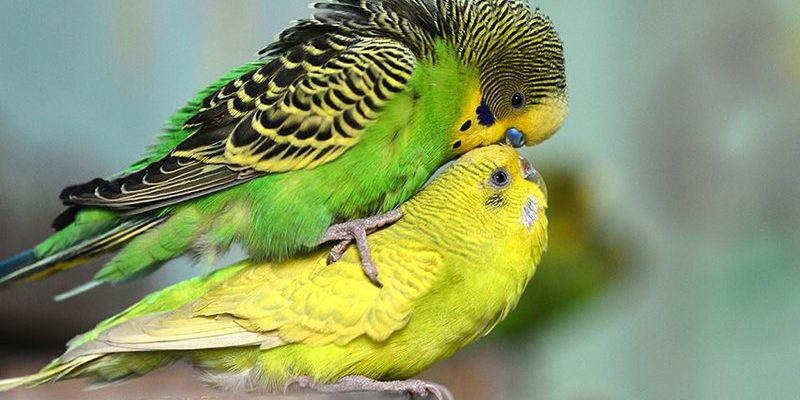
Now, it’s important to remember that breeding budgies isn’t just about putting a pair together and hoping for the best. There’s a fair bit of responsibility involved, from setting up the perfect nesting area to ensuring those tiny chicks get the care they need once they hatch. You might be asking how to approach this whole process. Let’s dive into the essentials of breeding budgies at home, focusing on nesting and chick care.
Setting Up The Perfect Nesting Environment
Creating a comfortable and safe nesting area is the first step in breeding budgies. A suitable nest can make all the difference in whether your budgies feel secure enough to breed. Start by choosing a clean and quiet spot in their cage, away from drafts and loud noises. Budgies appreciate privacy, which helps reduce stress during breeding.
Consider using a small wooden nest box, about 8 inches by 8 inches. Make sure it has an entrance hole that allows easy access for the parents but is small enough to keep out potential intruders. Inside the box, you can add nesting material—think soft hay or shredded paper. This gives the birds a cozy space to lay their eggs and hatch their chicks. Remember to provide a few days before your budgies settle in before introducing the nest box.
Choosing The Right Budgie Pair
When it comes to breeding, not just any budgie pair will do. Compatibility is crucial. Ideally, you should select a male and female with complementary colors and good health. You’ll want to look for signs of health, such as bright eyes, smooth feathers, and active behavior.
You might be wondering how to tell a male from a female budgie. A male typically has a vibrant blue cere (the fleshy area above the beak), while a female’s cere is often brown or tan, especially when she’s in breeding condition. Pairing two compatible budgies will increase the chances of successful breeding and healthier chicks.
The Breeding Process: What to Expect
Once you have your nesting box set up and a compatible pair selected, it’s time for the magic to happen. In most cases, the female will lay about 4 to 6 eggs over a few days. You might not see much action in the nesting box at first, but keep an eye out because the parents will take turns incubating the eggs.
During incubation, which lasts about 18 days, it’s vital to maintain a calm environment. Keep the cage away from sudden loud noises or disturbances. The parents will take care of the eggs, rotating and keeping them warm. If you’re ever concerned, monitor the parents’ behavior and egg condition, ensuring they’re not left unattended for too long.
Caring for the Chicks After Hatching
After nearly three weeks of anticipation, you’ll see little chicks peeking out of their shells! The first few days are critical. The parents will be busy feeding their chicks a special diet that consists of regurgitated food, which is rich in nutrients. You might notice the chicks becoming more vocal and moving around the nest.
As the chicks grow, their feathers will start to develop. Around two to three weeks, they will begin to leave the nest on short adventures. This is an exciting and slightly nerve-wracking time as you watch them explore. Ensure they have plenty of soft, safe places to land as they learn to fly.
Feeding Your Baby Budgies
One of the most important aspects of chick care is providing the right diet. Start by offering fresh, high-quality seeds, and gradually introduce pellets and fresh vegetables. You want to aim for a well-rounded diet rich in nutrients to support their growth. Some good options include:
- Millet seeds for a high-energy snack
- Leafy greens like spinach or kale for vitamins
- Grains like oats or quinoa for protein
You might find the parents do a fantastic job of feeding their chicks, but it’s worth occasionally checking if they seem hungry. If you notice any chicks lagging behind, consider supplementing their diet with a little mashed hard-boiled egg or commercial chick food designed for budgies.
Dealing with Common Challenges
Breeding isn’t always smooth sailing. You might run into challenges like unhatched eggs or chicks that require extra care. A common issue is if one chick seems weaker than the others. In such cases, you might need to step in and hand-feed that chick. Use a mixture of baby bird formula, which you can find at pet stores, and a small syringe to feed them gently, ensuring they get the nutrients they need.
Another thing to keep in mind is the health of both the parents and the chicks. If you notice any signs of illness, such as lethargy or unusual droppings, it’s best to consult with a veterinarian experienced in avian care. Keeping a vigilant eye on their health can help prevent more serious issues down the line.
When To Wean the Chicks
Weaning is a natural part of the growth process. Around six weeks, the chicks will start to eat on their own, but they may not be fully independent just yet. Watch for signs that they’re ready, like spending more time away from the parents and exploring their food dishes.
You can start separating the chicks gently. If you’re feeling adventurous, you might even consider setting up a new cage for them. This allows them to explore their space and adjust without stress. It’s a big step, but with a little patience, they will thrive in their new environment.
In conclusion, breeding budgies at home is a rewarding experience that highlights the beauty of life and care. From setting up the perfect nesting space to nurturing those fluffy chicks, it’s a journey filled with learning and joy. Just remember to be patient and attentive, and you’ll be rewarded with the cheerful songs of happy budgies filling your home. Happy breeding!

